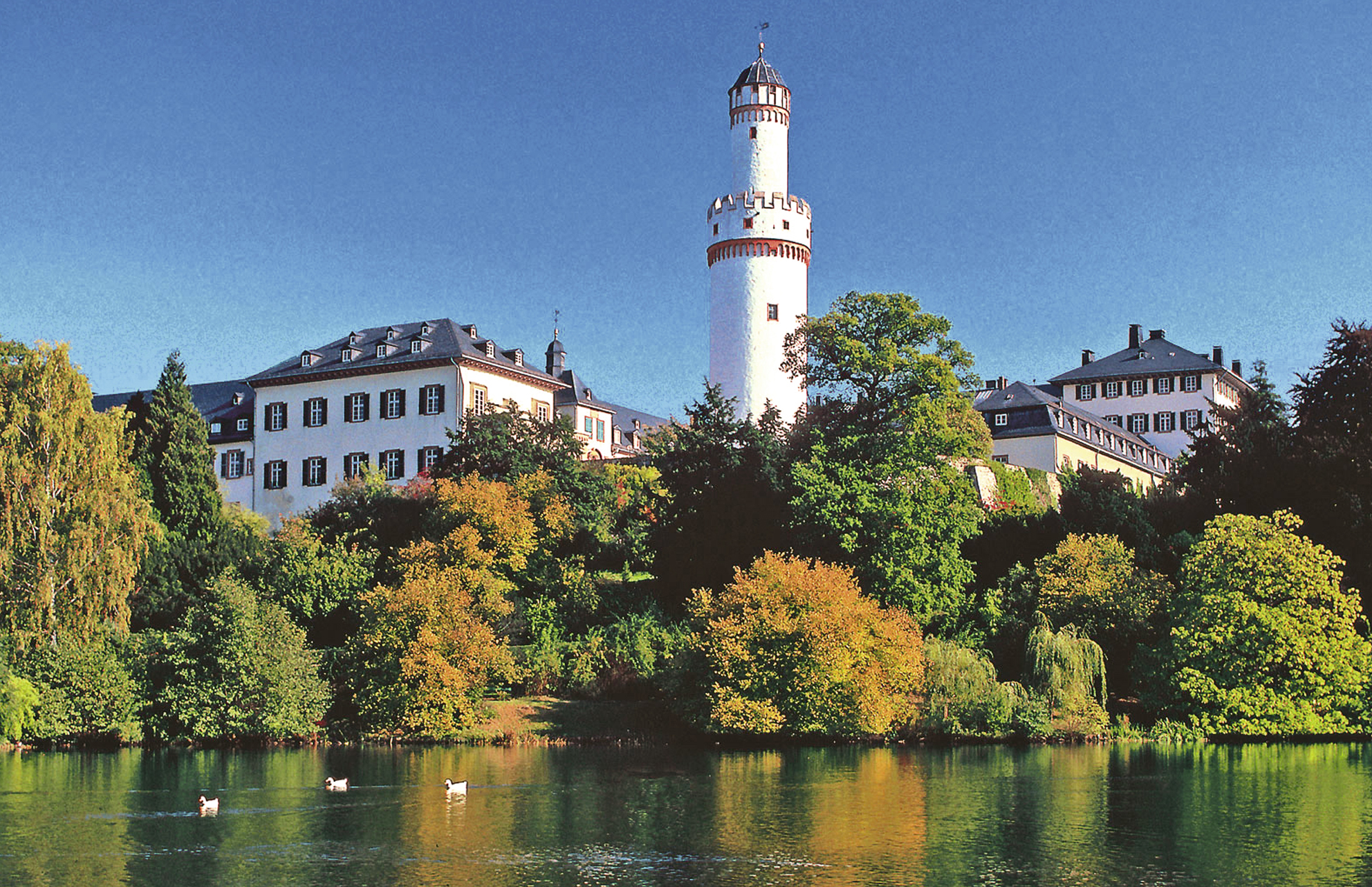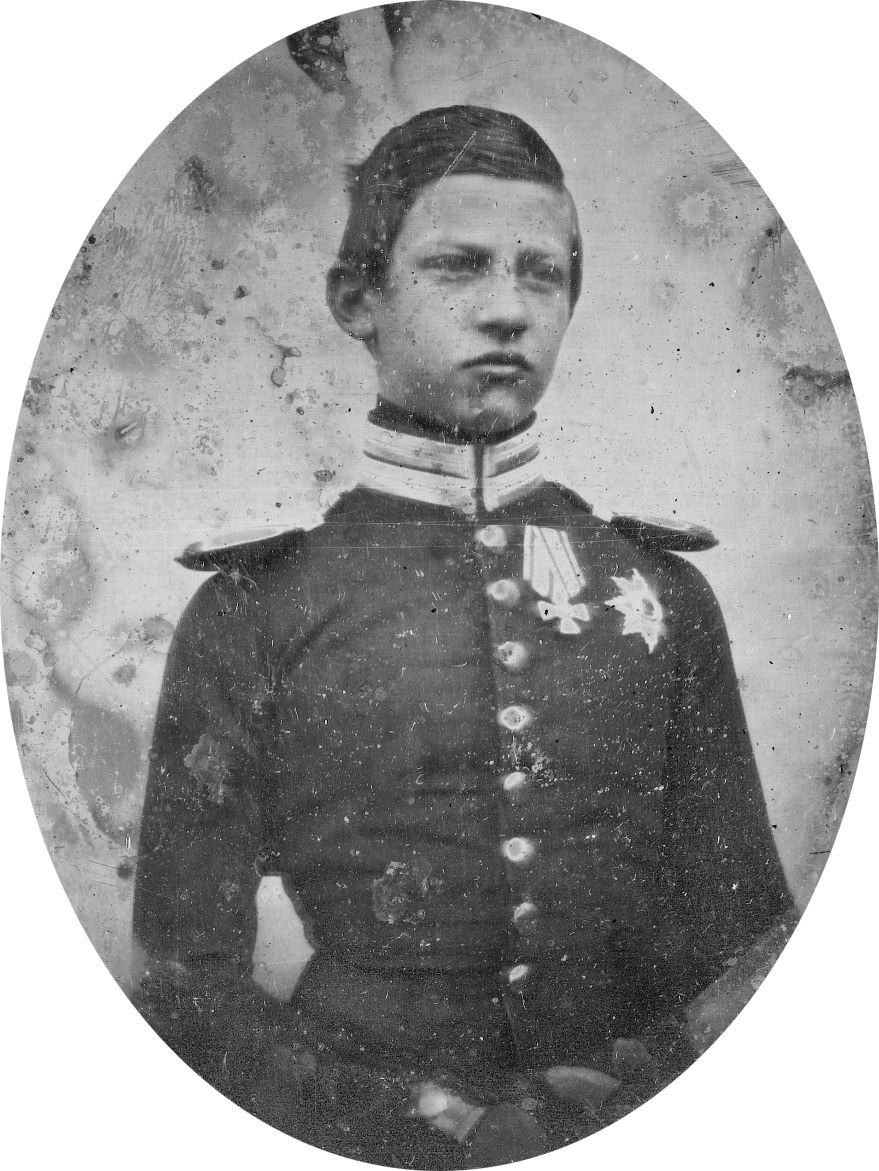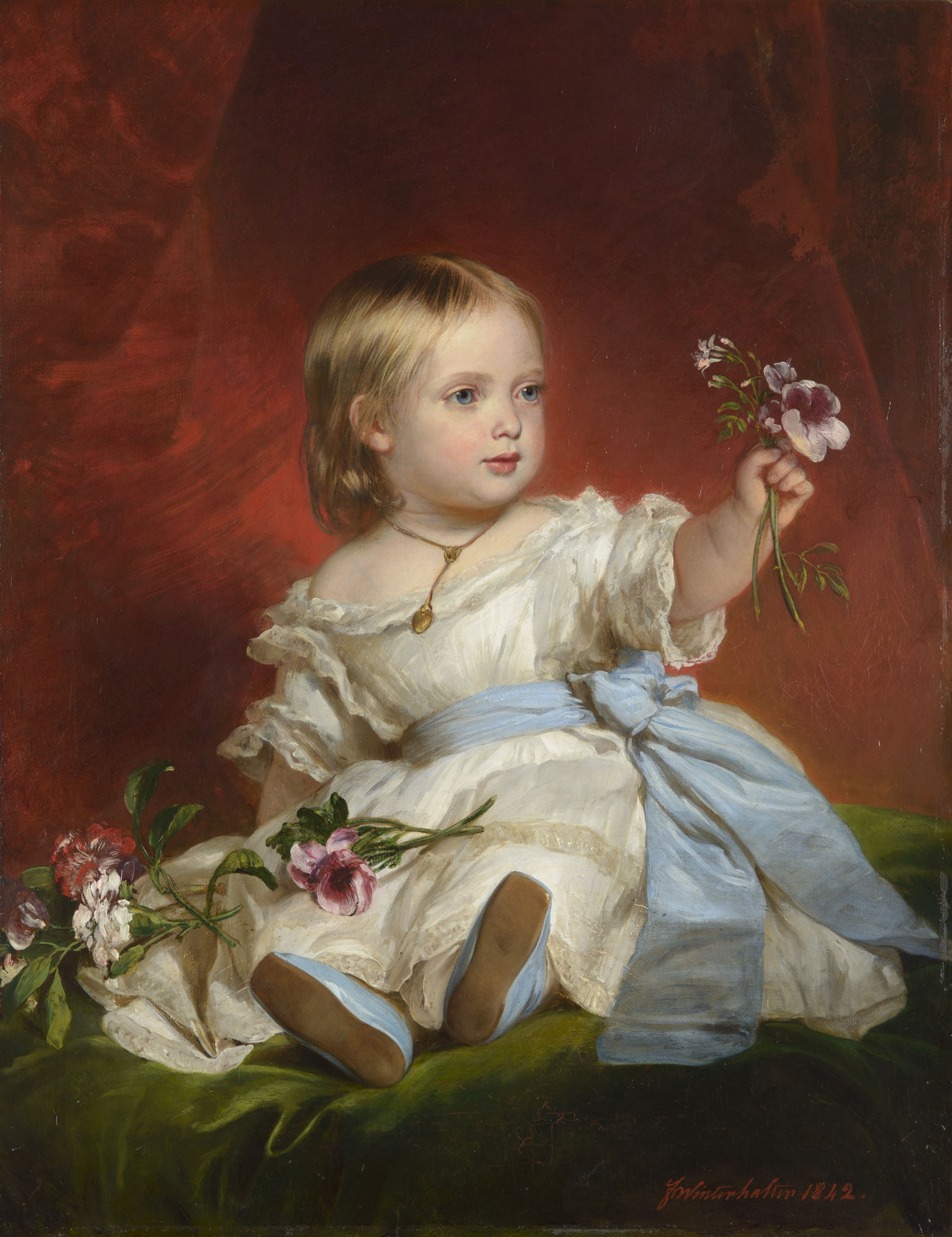|
Bad Homburg Castle
Bad Homburg Castle (''Schloss Bad Homburg'') is a castle and palace in the German city of Bad Homburg vor der Höhe. Originally the residence of the Landgraves of Hesse-Homburg, it was first built in the 12th century. All but the keep was demolished in 1660 by Frederick II, Landgrave of Hesse-Homburg. He replaced the old castle with a new one designed by Paul Andrich between 1680 and 1685. Its grounds and gardens were landscaped in the 18th and 19th centuries, including the addition of the Gothic House. It was inherited by Hesse-Darmstadt after Prussia's annexation of Hesse-Homburg in 1866 following the Austro-Prussian War, becoming a summer residence for the kings of Prussia. William I stayed at the castle several times, as did his son and successor Frederick III and Frederick's wife Victoria. The castle was a particular favourite of Frederick and he and his successors added bathrooms, telephone rooms and electricity and merged some rooms. After 1918 the castle was administered ... [...More Info...] [...Related Items...] OR: [Wikipedia] [Google] [Baidu] |
Schloss HG
''Schloss'' (; pl. ''Schlösser''), formerly written ''Schloß'', is the German term for a building similar to a château, palace, or manor house. Related terms appear in several Germanic languages. In the Scandinavian languages, the cognate word ''slot''/''slott'' is normally used for what in English could be either a palace or a castle (instead of words in rarer use such as ''palats''/''palæ'', ''kastell'', or ''borg''). In Dutch, the word ''slot'' is considered to be more archaic. Nowadays, one commonly uses ''paleis'' or ''kasteel''. But in English, the term does not appear, for instance, in the United Kingdom, this type of structure would be known as a stately home or country house. Most ''Schlösser'' were built after the Middle Ages as residences for the nobility, not as true fortresses, although originally, they often were fortified. The usual German term for a true castle is ''burg'', that for a fortress is ''festung'', and — the slightly more archaic term — ''v ... [...More Info...] [...Related Items...] OR: [Wikipedia] [Google] [Baidu] |
Bad Homburg Vor Der Höhe
Bad Homburg vor der Höhe () is the district town of the Hochtaunuskreis, Hesse, on the southern slope of the Taunus mountains. Bad Homburg is part of the Frankfurt Rhein-Main urban area. The town's official name is ''Bad Homburg v.d.Höhe'', which distinguishes it from other places named Homburg. The town has become best known for its mineral springs and spa (hence the prefix ''Bad'', meaning "bath"), and for its casino. Bad Homburg was one of the wealthiest towns in Germany (while the Hochtaunuskreis itself and the Landkreis Starnberg in Bavaria regularly vie for the title of the wealthiest district in Germany). the town used the marketing slogan ''Champagnerluft und Tradition'' (Champagne air and tradition). History Medieval origins Local tradition holds that Bad Homburg's documented history began with the mention of the ''Villa Tidenheim'' in the Lorsch codex, associated with the year 782. This ''Villa Tidenheim'' was equated with the historic city center, which is cal ... [...More Info...] [...Related Items...] OR: [Wikipedia] [Google] [Baidu] |
Landgraves Of Hesse-Homburg
Hesse-Homburg was formed into a separate landgraviate in 1622 by the landgrave of Hesse-Darmstadt; it was to be ruled by his son, although it did not become independent of Hesse-Darmstadt until 1668. It was briefly divided into Hesse-Homburg and Hesse-Homburg-Bingenheim; but these parts were reunited in 1681. History In 1806, Hesse-Homburg was incorporated with Hesse-Darmstadt; but in 1815, by the Congress of Vienna, the latter state was compelled to recognize the independence of Hesse-Homburg, which was increased by the addition of Meisenheim. The landgraviate of Hesse-Homburg consisted of two parts, the district of Homburg on the right side of the Rhine, and the district of Meisenheim, added in 1815, on the left side of the same river. Hesse-Homburg joined the German Confederation as a sovereign state on July 7, 1817. The Landgraviate was the only principality that was not one of the founding members of the Confederation, apart from the Duchy of Limburg ruled by the King of th ... [...More Info...] [...Related Items...] OR: [Wikipedia] [Google] [Baidu] |
Frederick II, Landgrave Of Hesse-Homburg
Frederick II of Hesse-Homburg (german: Friedrich II. von Hessen-Homburg), also known as the Prince of Homburg (30 March 1633 – 24 January 1708) was Landgrave of Hesse-Homburg. He was also a successful and experienced general for the crowns of both Sweden and of Brandenburg, but is best remembered as the eponymous hero of Heinrich von Kleist's play '' Der Prinz von Homburg''.also ''Prinz Friedrich von Homburg'', or in full, ''Prinz Friedrich von Homburg oder die Schlacht bei Fehrbellin'' Life Childhood and youth Frederick was born in Homburg (the present Bad Homburg vor der Höhe), the seventh and youngest child of Landgrave Frederick I of Hesse-Homburg, who died in 1638, leaving the children to be brought up under the care of their mother, Margaret Elisabeth of Leiningen-Westerburg. At his mother's wish Frederick was educated by private tutors together with the sons of his cousin, George II, Landgrave of Hesse-Darmstadt, in Marburg. In 1648 he broke his leg and spent so ... [...More Info...] [...Related Items...] OR: [Wikipedia] [Google] [Baidu] |
Gothic House (Bad Homburg)
The Gothic House (''Gotisches Haus'') is a jagdschloss (hunting lodge) in the Dornholzhausen district of Bad Homburg, just within the town boundary and at the end of the Tannenwaldallee, which forms a direct link between Bad Homburg Castle and the Gothic House. History Origins It was built in the castle's grounds in 1823 by Landgräfin Elisabeth, daughter of George III of the United Kingdom, for her husband Frederick VI, Landgrave of Hesse-Homburg, with the foundation stone laid on 17 April that year. She funded it using her dowry and sited it in an ideal location for Frederick to host festivities and excursions. It was also sited about 100 metres south of the grave of Frederick's horse Madjar - the Landgrave had esteemed Madjar so much that he had him formally buried in 1773 and wrote a poem for the bronze plaque marking the site, which translates: Also nearby was the 'Landgrafensäule' or 'Landgraf column', erected in 1816 on what later became the visual axis from the Go ... [...More Info...] [...Related Items...] OR: [Wikipedia] [Google] [Baidu] |
Hesse-Darmstadt
The Landgraviate of Hesse-Darmstadt (german: Landgrafschaft Hessen-Darmstadt) was a State of the Holy Roman Empire, ruled by a younger branch of the House of Hesse. It was formed in 1567 following the division of the Landgraviate of Hesse between the four sons of Landgrave Philip I. The residence of the landgraves was in Darmstadt, hence the name. As a result of the Napoleonic Wars, the landgraviate was elevated to the Grand Duchy of Hesse following the Empire's dissolution in 1806. Geography The landgraviate comprised the southern Starkenburg territory with the Darmstadt residence and the northern province of Upper Hesse with Alsfeld, Giessen, Grünberg, the northwestern ''hinterland'' estates around Gladenbach, Biedenkopf and Battenberg as well as the exclave of Vöhl in Lower Hesse. History The Landgraviate of Hesse-Darmstadt came into existence in 1567, when George, youngest of the four sons of Landgrave Philip I "the Magnanimous", received the Hessian lands in the former ... [...More Info...] [...Related Items...] OR: [Wikipedia] [Google] [Baidu] |
Austro-Prussian War
The Austro-Prussian War, also by many variant names such as Seven Weeks' War, German Civil War, Brothers War or Fraternal War, known in Germany as ("German War"), (; "German war of brothers") and by a variety of other names, was fought in 1866 between the Austrian Empire and the Kingdom of Prussia, with each also being aided by various allies within the German Confederation. Prussia had also allied with the Kingdom of Italy, linking this conflict to the Third Italian War of Independence, Third Independence War of Italian unification. The Austro-Prussian War was part of the wider Austria-Prussia rivalry, rivalry between Austria and Prussia, and resulted in Prussian dominance over the German states. The major result of the war was a shift in power among the German states away from Austrian and towards Prussian hegemony. It resulted in the abolition of the German Confederation and its partial replacement by the unification of Germany, unification of all of the northern German sta ... [...More Info...] [...Related Items...] OR: [Wikipedia] [Google] [Baidu] |
Kings Of Prussia
The monarchs of Prussia were members of the House of Hohenzollern who were the hereditary rulers of the former German state of Prussia from its founding in 1525 as the Duchy of Prussia. The Duchy had evolved out of the Teutonic Order, a Roman Catholic crusader state and theocracy located along the eastern coast of the Baltic Sea. The Teutonic Knights were under the leadership of a Grand Master, the last of whom, Albert, converted to Protestantism and secularized the lands, which then became the Duchy of Prussia. The Duchy was initially a vassal of the Kingdom of Poland, as a result of the terms of the Prussian Homage whereby Albert was granted the Duchy as part of the terms of peace following the Prussian War. When the main line of Prussian Hohenzollerns died out in 1618, the Duchy passed to a different branch of the family, who also reigned as Electors of Brandenburg in the Holy Roman Empire. While still nominally two different territories, Prussia under the suzerainty of Po ... [...More Info...] [...Related Items...] OR: [Wikipedia] [Google] [Baidu] |
William I, German Emperor
William I or Wilhelm I (german: Wilhelm Friedrich Ludwig; 22 March 1797 – 9 March 1888) was King of Prussia from 2 January 1861 and German Emperor from 18 January 1871 until his death in 1888. A member of the House of Hohenzollern, he was the first head of state of a united Germany. He was de facto head of state of Prussia from 1858, when he became regent for his brother Frederick William IV, whose death three years later would make him king. Under the leadership of William and his minister president Otto von Bismarck, Prussia achieved the unification of Germany and the establishment of the German Empire. Despite his long support of Bismarck as Minister President, William held strong reservations about some of Bismarck's more reactionary policies, including his anti-Catholicism and tough handling of subordinates. In contrast to the domineering Bismarck, William was described as polite, gentlemanly and, while staunchly conservative, more open to certain classical liberal ideas th ... [...More Info...] [...Related Items...] OR: [Wikipedia] [Google] [Baidu] |
Frederick III, German Emperor
Frederick III (german: Friedrich Wilhelm Nikolaus Karl; 18 October 1831 – 15 June 1888), or Friedrich III, was German Emperor and King of Prussia for 99 days between March and June 1888, during the Year of the Three Emperors. Known informally as "Fritz",MacDonogh, p. 17. he was the only son of Emperor Wilhelm I and was raised in his family's tradition of military service. Although celebrated as a young man for his leadership and successes during the Second Schleswig, Austro-Prussian and Franco-Prussian wars,Kollander, p. 79.''The Illustrated London News'' he nevertheless professed a hatred of warfare and was praised by friends and enemies alike for his humane conduct. Following the unification of Germany in 1871 his father, then King of Prussia, became the German Emperor. Upon Wilhelm's death at the age of ninety on 9 March 1888, the thrones passed to Frederick, who had been German Crown Prince for seventeen years and Crown Prince of Prussia for twenty-seven years. Freder ... [...More Info...] [...Related Items...] OR: [Wikipedia] [Google] [Baidu] |
Victoria, Princess Royal
Victoria, Princess Royal (Victoria Adelaide Mary Louisa; 21 November 1840 – 5 August 1901) was German Empress and Queen of Prussia as the wife of German Emperor Frederick III. She was the eldest child of Queen Victoria of the United Kingdom and Prince Albert of Saxe-Coburg and Gotha, and was created Princess Royal in 1841. She was the mother of Wilhelm II, German Emperor. Educated by her father in a politically liberal environment, Victoria was married at age 17 to Prince Frederick of Prussia, with whom she had eight children. Victoria shared with Frederick her liberal views and hopes that Prussia and the later German Empire should become a constitutional monarchy, based on the British model. Criticised for this attitude and for her English origins, Victoria suffered ostracism by the Hohenzollerns and the Berlin court. This isolation increased after the rise to power of Otto von Bismarck, one of her most staunch political opponents, in 1862. Victoria was empress for on ... [...More Info...] [...Related Items...] OR: [Wikipedia] [Google] [Baidu] |
Günther Binding
Günther Binding (born 6 March 1936) is a German art historian and retired professor of art history and urban conservation at the University of Cologne. Life Born in Koblenz, Binding, brother of the later sculptor Wolfgang Binding and uncle of the painter Stephanie Binding, attended primary schools in Hildesheim and Arnsberg and graduated from Apostelgymnasium in Cologne in 1955 with his Abitur. After three semesters of art history at the University of Cologne, he studied architecture at the TH Aachen and later art history, history, archaeology in Bonn. In 1959, he was accepted into the Studienstiftung des deutschen Volkes programme for gifted students. After graduating in 1960, he received his doctorate in 1962 under Willy Weyres; his dissertation was on the subject of ''Münzenberg Castle in the Wetterau''. In 1963, he received his doctorate under Herbert von Einem in Bonn with the thesis ''The Palatinate of Emperor Friedrich Barbarossa in Gelnhausen and Early Baptist A ... [...More Info...] [...Related Items...] OR: [Wikipedia] [Google] [Baidu] |





